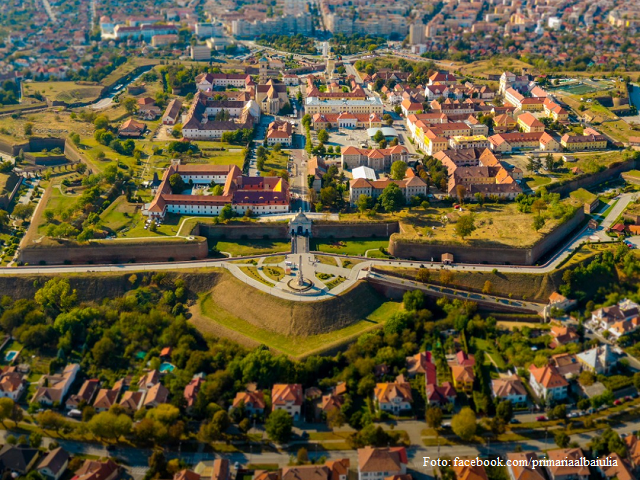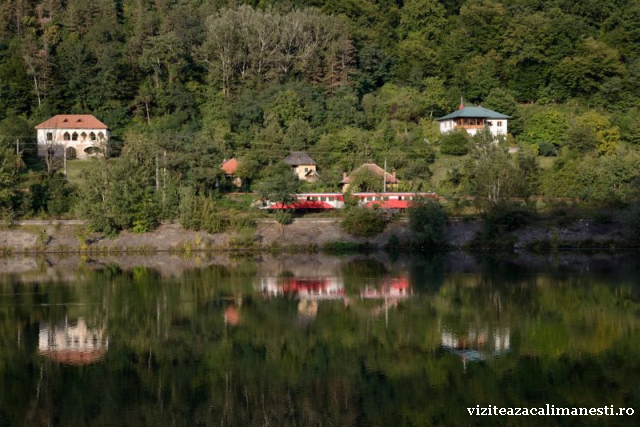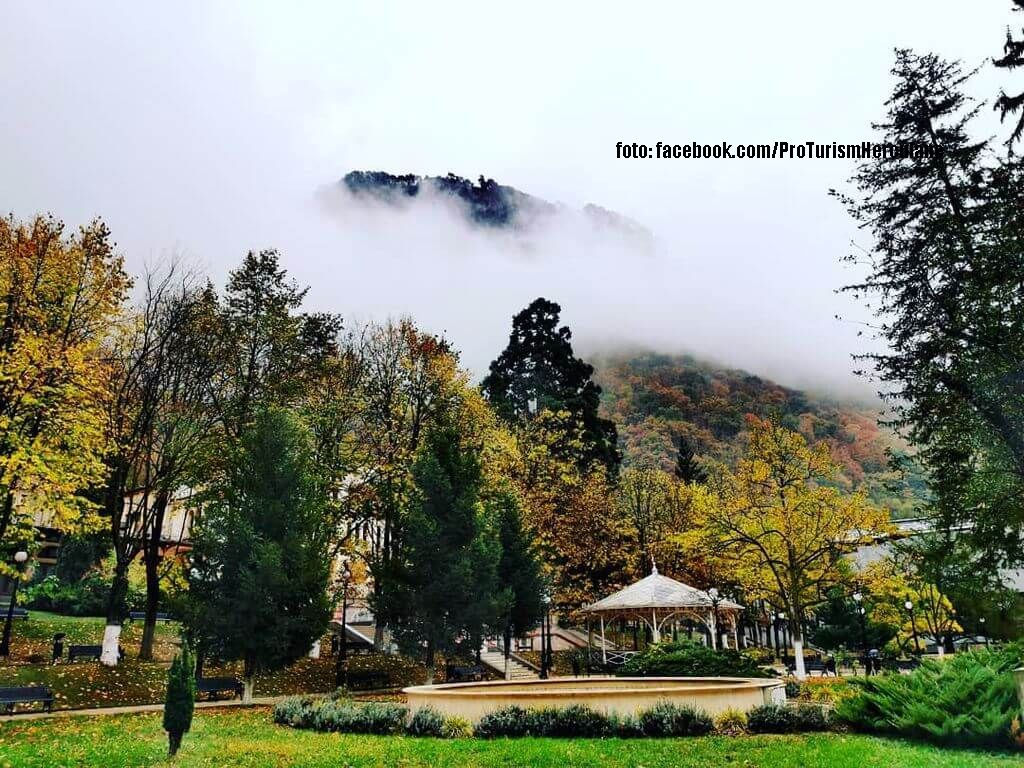Alba Iulia, Romania’s other capital city
Transylvanian history, past into present

Daniel Onea, 25.05.2023, 14:00
We’re heading today, towards Transylvania. We want to
hit our destination, dubbed Romania’s other capital city, the town of Alba Iulia, which
stands out thanks to its Vauban-type fortress, built in the 18th century, in
the shape of a star. The fortress in Alba Iulia is described as Europe’s second most relevant such
settlement, being outranked by a similar fortress in Luxembourg. Here you can also
find the Batthyaneum, a library extremely well-stocked in rare
manuscripts. However, we shall also discover a modern town, with an eventful
cultural agenda. Our destination today boasts Romania’s strongest national
symbolism. Or at least that is what the mayor of Alba Iulia municipal town, Gabriel
Pleșa, told us.
It is here that the first Union
of 1600 was accomplished, under the scepter of Michael the Brave. Then, in 1918, the December 1st Great Union
Act was accomplished; it was Romanians’ centuries-old dream come true.
Also on October 15, 1922, the confirmation of the Romanian unitary state was achieved
through the coronation, in Alba Iulia, of King Ferdinand
I and Queen Mary, a centennial which in 2018 we celebrated with great pomp and
loads of people attending. These are three key moments of the town and of the
Romanian people! However, our listeners need to know Alba Iulia has been
documented more than 2,000 years ago. Every step you take in the city, you’re literally
treading on history. Part of the Roman castrum was preserved and also art of the medieval fortress, while the gem
of the town is, obviously, the most recent fortification, the one the Austrians
erected over 1715 and 1728, the Alba Carolina fortress, built after Vauban’s
plans. It is a very well-kept fortress, with forts, counterforts, with bastions.
The Princes’ Palace, just like many other monuments in Alba
Iulia, has an old history, linked to figureheads and events that where highly consequential
for the history of Transylvania and even for the history of Europe. The edifice
is representative for the Transylvanian Principality’s days of glory when for
more than 150 years, the fate of the region was decided in Alba Iulia. At the moment, restoration works are in full swing for
the Princes’ Palace.
Gabriel Plesa once
again:
All historians who were
here doing their research told us it would be Transylvania’s most important building.
It was here that the Transylvanian Assembly was held for 160 ago. Also, it was here
that we had the Throne Hall for Michael the Brave, the Enlightenment Princes Gabriel
Bethlen and Rákóczi I, Rákóczi al II-lea, Sigismund Báthory. Practically, it
was the town of Alba Iulia’s opening towards education through its first university,
established 400 years ago by Enlightenment prince Gabriel Bethlen prior to the battle of Mohács and the
principality’s falling under the sway of the Ottomans. It is a very important one,
the period after the conquest of the Transylvanian principality by the Habsburgs,
it was a time when roads were built, the fortress was built, a network of
railways was built, and so many other things.
Here is mayor Gabriel Plesa once again, this time telling us we’re
always in for pleasant surprises in Alba Iulia. Also, Gabriel Plesa announced the
inauguration of a new tourist asset in town.
We have been carrying a project through which we have already started works for the restoration of the house that belonged to the town’s first
Romanian mayor after 1918, lawyer Camil Velican. It is a house that will be
smack bang in the center of the town and which will also be a new tourist asset. Actually,
it was here that, in the days ahead of the Great Union, all the official documents were signed. The Steering Council, The National Romanian Council, carried all its
works in the Velicans’ house. That house was nationalized
during the communist regime, being ceded to various institutions and throughout
the years, its level of degradation was very high. We bought it from an
inheritor, and from the bottom of our hearts we hope we can refurbish it. We got
hold of part of the original furniture, part of the furniture is with Romania’s
Museum of National History in Bucharest and they promised we shall receive it,
since they did not have it exhibited, so there we are, it will be a new
attraction for those travelling to Alba Iulia.
The town of Alba Iulia is well-known thanks to the events
staged to celebrated the National Day of Romania, on December 1st.
However, the town’s cultural agenda goes way beyond that.
Gabriel Plesa:
If you want to keep your tourists, you cannot
just offer them only vestiges, since they come, they see, return to their cars
and drive away. Reason enough for us to have a list of beautiful events, for which
we gave the start when we had the Museum’ Night on May 13. On June the 1st we have the Land of happiness, a playing
festival. We have a Super Rally first leg in Alba Iulia. It will be a circuit, just
lie in Monaco, on the municipal town streets and the interest for that seems to
be very high. Then we stage Alba Fest, the Days of the Town over June 23 and
25th. There are three days of fine concerts and many other events, we
have thew Feast of Music, held over July 14 and 16. Again, there are three days
of good music. We stage Rowmania, the rowing
contest on river Mures, initially staged by the late Ivan Patzaichin, a friend
of the town of Alba Iulia. Over August 11 and 15, you are
invited to the Apulum Roman Festival. There will be 300-400 actors for the historical
reenactment and over 20, 25 troupes from all over the world will come to Alba Iulia
for combat demos, they will exhibit their apparel and the trades, the old crafts.
As an absolute first, we stage the European Historical Target Archery Championship.
Over August 4 and 13, you can see several hundreds of athletes, arriving from all
over the world. The contest will be held in the area of the fortress.
These are only a few of the events staged throughout the
year! And rounding them off is the weekly performance provided by the changing
of guards in Alba Iulia Fortress. With
details on that, here is the mayor of Alba Iulia Municipality, Gabriel Plesa.
The Austrian guard of the
fortress built by the Habsburgs is active on Saturdays and Sundays at 12 pm.
We’re most likely going to extend the program, on Tuesdays and Wednesday ,during
holidays and vacations. Then on Fridays, at 7 pm, in front of the fourth gate,
in front of the Roman-Catholic Cathedral, the re-enactment show will be held,
featuring gladiators and those of the 13th Gemina Legion. The show
is extremely popular, we stage it jointly with the Living History NGO, with some
of the employees of the National Museum of the Union but also with very, very
many volunteers. We mull over staging a similar event in the future: the triumphant
entrance of Michael the Brave in Alba Iulia. We’re still considering how we’re
going to do that and how often. It was a key moment, that of November 1st,
1599, when after the battle of Selimbar Michael the Brave entered Alba Iulia.
Accessing the site turism.apulum.ro, you can get details
on the historical objectives, you can see the timetable of the events ad you will
get info on the public transportation conditions or accommodation recommendations.






























